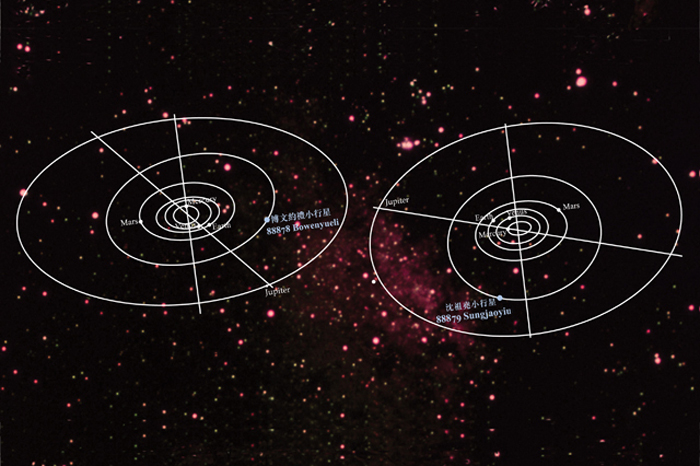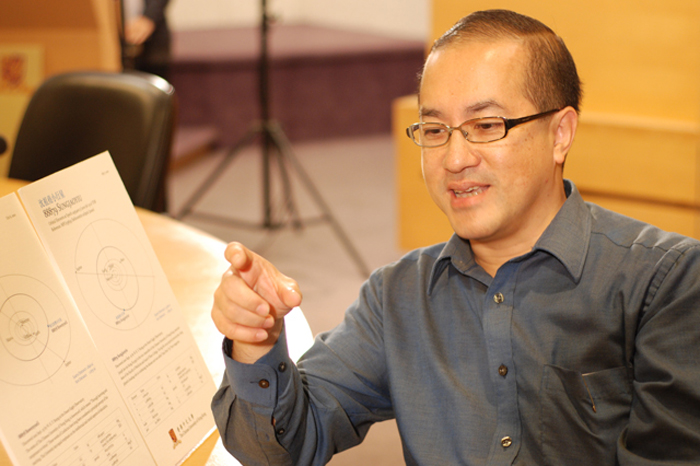
Twinkling Stars, Hidden Stories
December 2010
Among billions of stars in the sky, an asteroid has been named after the University's motto, '88878 Bowenyueli', a celestial symbol of how generations of CUHK members have forged ahead with perseverance and persistence. Another has been named after the current CUHK Vice-Chancellor. A total of five asteroids have been inspired by members of CUHK, respectively former Vice-Chancellor and Nobel Laureate in Physics Prof. Charles K. Kao, Distinguished Professor-at-Large and another Nobel Laureate in Physics, Prof. Yang Chen-ning, and Distinguished Professor-at-Large and Fields Medalist Prof. Yau Shing-tung.
Mr. Bill Yeung, a renowned amateur astronomer and president of the Hong Kong Astronomical Society, was the person who discovered the Bowenyueli asteroid. He said, 'If the asteroids are sentient beings, they would take pride in being the namesakes of such great figures.' Mr. Yeung has discovered over 2,000 asteroids and named some of them after people he respects. Though not a CUHK alumnus, Mr. Yeung happened to be at New Asia College, attending its 60th anniversary drama performance Our Starlight Stories, in November 2009. He was touched by two lines of the College anthem, penned by the late Prof. Ch'ien Mu, founding Head of the College: 'Yet it is such uncouth environment that prompts me to struggle for excellence, and the state of deprivation only encourages my affections for others to flow.' They gave Mr. Yeung the idea of naming an asteroid after CUHK.
'Even before this, I had intended to name an asteroid after someone who was involved in the battle against the SARS epidemic in 2003. Prof. Joseph J.Y. Sung, as we know, was named an "Asian Hero" by Time for his efforts at combating SARS. When he was appointed the seventh Vice-Chancellor of CUHK, I decided to name two asteroids, 88878 and 88879 which I had discovered on 25 September 2001, after the Chinese University and Professor Sung,' said Mr. Yeung. After discussing his ideas with the University, he came to the decision of naming the asteroid after the University's motto, 'bo wen yue li' ('Through learning and temperance to virtue') which reflects the University's equal emphasis laid on the intellectual and the moral aspects of education. Subsequently, with the approval of the International Astronomical Union, '88878 Bowenyueli' and '88879 Sungjaoyiu' are born.
Both asteroids are situated at the Asteroid Belt between Mars and Jupiter. '88878 Bowenyueli' has a diameter of about 3 km, and an area that can accommodate 36 CUHK campuses and an orbital period of 4.44 years. '88879 Sungjaoyiu' is smaller with a diameter of over 2 km and an orbital period of 4.12 years.
Mr. Yeung admits that both asteroids are not unique as far as celestial bodies go, and they cannot be seen with the naked eye. 'But who cares about appearances? The most important values, like "bowenyueli", are invisible.'


